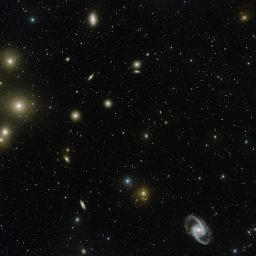Coffee talks
Friday 13/11/2020 @ 11:30, On-line - meet.google.com/sue-bwvk-axf
Alessandro Paggi (INAF OATO), "A new multiwavelength census of blazars"
In this talk I will present a study aimed at augmenting the current blazar census, to build a catalog of blazar candidates with more homogeneous sky coverage with respect to current blazar catalogs, especially at low Galactic latitudes, and that can provide candidate counterparts to unassociated gamma-ray sources and sources of high-energy neutrino emission or ultra-high energy cosmic rays. Starting from the ALMA Calibrator Catalog, we compiled a selection of 1580 ALMA Blazar Candidates (ABCs) for which we collected multi-wavelength information, including data from Gaia, SDSS, LAMOST, WISE, X-ray (Swift-XRT, Chandra-ACIS and XMM-Newton-EPIC), and Fermi-LAT data. We also compared our ABCs with existing blazar catalogs, such as 4FGL, 3HSP, WIBRaLS2, and the KDEBLLACS. ABCs are significantly brighter in radio than known blazars, while they are dimmer than the latter in the Gaia g band. Most ABCs classified as QSO and BL Lac fall into the SDSS color regions of low redshift quasars. We collected 110 optical spectra in SDSS DR12 and LAMOST DR5, which mostly classify the corresponding sources as QSO (98), while 12 sources turned out to be objects with galactic spectra. ABC sources are significantly bluer than known blazars in WISE colors. In X-ray ABCs are, on average, similar to known blazars in terms of spectral slopes, while they appear dimmer in terms of flux. A comparison of gamma-ray properties shows that the ABCs are on average dimmer, and that their gamma-ray spectra are softer than known blazars, indicating a significant contribution on the part of FSRQ sources. Finally, making use of WISE colors, we classified 715 ABCs as candidate gamma-ray blazar of different classes.

